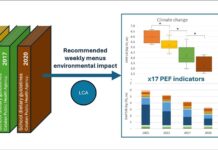Researchers have developed a groundbreaking method for simultaneously imaging DNA and RNA within living cells using harmless infrared to near-infrared light. This breakthrough, a collaboration between the National Institute for Materials Science (NIMS), Nagoya University, Gifu University, and the University of Adelaide, promises to revolutionize early disease detection and cellular aging studies. The findings, published in Science Advances, overcome key limitations of current cell imaging techniques.
The Challenge with Existing Methods
Traditional cell imaging struggles to accurately track the earliest stages of cellular damage that precede aging or disease. Current methods often rely on ultraviolet-visible (UV-vis) light, which can harm cells and distort results. They also lack the sensitivity to distinguish subtle changes in cellular state, leading to delayed diagnoses and incomplete understanding of treatment effects. A universal, non-toxic imaging approach was urgently needed.
A Dual-Light Breakthrough
The research team achieved simultaneous DNA and RNA visualization by employing two distinct types of harmless excitation light. They paired this with specially designed fluorescent dye probes (N-heteroacene dyes) that selectively bind to DNA and RNA. This dual-imaging approach allows for unprecedented insight into cellular health.
Key findings include:
- Enhanced Sensitivity: RNA imaging proved more effective at predicting early cell damage and aging than traditional methods.
- Comprehensive Monitoring: The method allows precise detection of all four stages of cell death, providing a complete picture of cellular fate.
- Non-Toxic Approach: The use of infrared to near-infrared light ensures minimal harm to living cells, making it ideal for long-term monitoring.
Implications for Diagnostics and Drug Discovery
This new method overcomes the limitations of existing imaging systems by visualizing single-cell state transitions in real-time. The ability to track subtle changes in DNA and RNA allows for ultra-early detection of cellular damage, potentially years before symptoms manifest.
Applications include:
- Non-Toxic Live-Cell Diagnostics: Monitoring cellular health without harming the sample.
- High-Throughput Drug Screening: Rapidly assessing the efficacy of new therapies.
- Personalized Medicine: Tailoring treatments based on individual cellular responses.
Looking Ahead: Detecting “Pre-Disease” States
The research team plans to extend this method to living organisms, aiming to establish techniques for early disease detection and precision medical strategies. Ultimately, they hope to develop technologies capable of identifying a “pre-disease” state—a point where cellular drift indicates impending health decline.
“This approach could allow us to intervene before irreversible damage occurs, potentially preventing disease progression entirely.” — Lead Researcher
This breakthrough represents a significant step towards proactive healthcare, where early cellular monitoring guides preventative interventions. By visualizing the earliest signs of cellular distress, this method promises to redefine how we approach disease detection and treatment


































